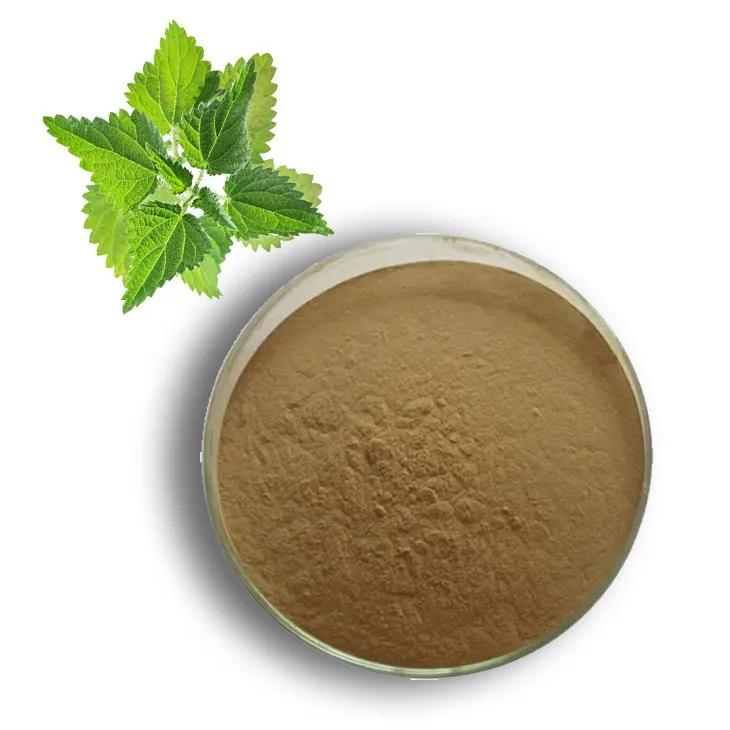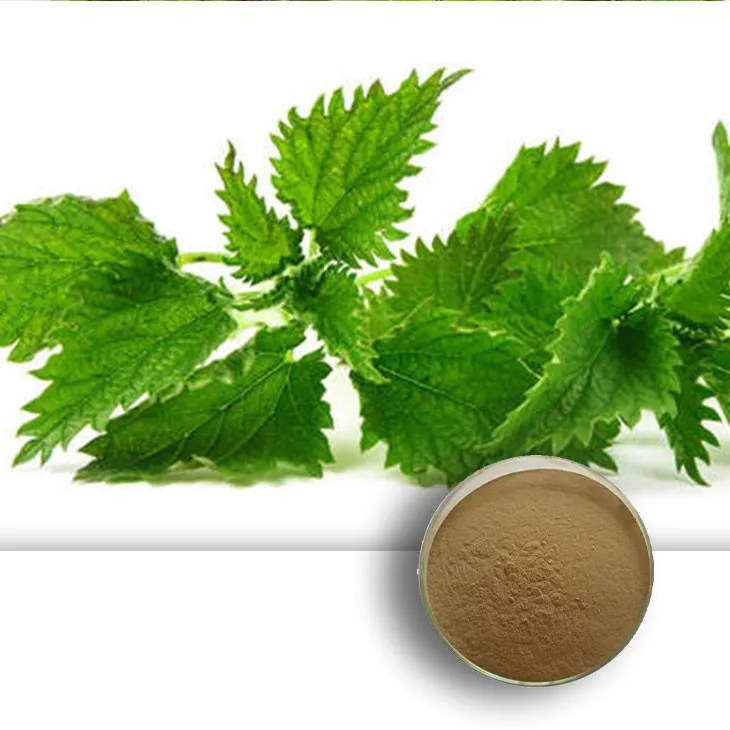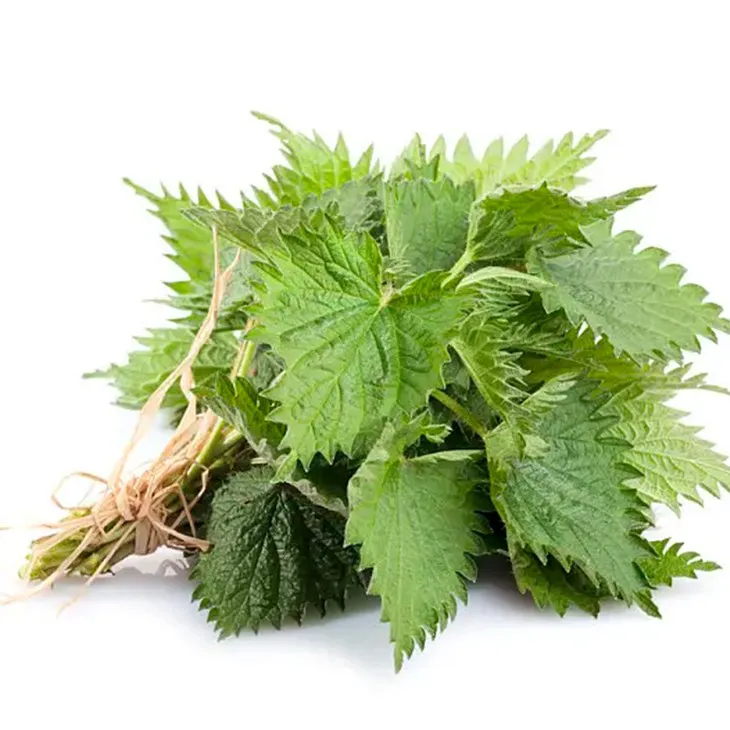- 0086-571-85302990
- sales@greenskybio.com
Extraction technology and production process of nettle leaf extract.
2024-11-30

1. Introduction
Nettle leaf extract has been gaining significant attention in recent years due to its numerous potential health benefits. It is rich in various bioactive compounds such as flavonoids, phenolic acids, and vitamins, which are associated with antioxidant, anti - inflammatory, and other positive health effects. High - quality extraction and production processes are essential to fully utilize these beneficial properties. This article aims to comprehensively discuss the extraction techniques and production processes of Nettle leaf extract.

2. Extraction Methods
2.1 Solvent Extraction
2.1.1 Principle
- Solvent extraction is based on the principle of solubility. Different solvents are used to dissolve the target compounds from the nettle leaves. Commonly used solvents include ethanol, methanol, and water. The choice of solvent depends on the solubility of the desired compounds in the solvent and the subsequent application of the extract.
- It is a relatively simple and cost - effective method. Ethanol, for example, is widely available and relatively inexpensive.
- Can be used to extract a wide range of compounds. Different solvents or solvent mixtures can be adjusted according to the specific components to be extracted.
- Some solvents may be toxic, and complete removal of the solvent from the final extract can be challenging. Residual solvents can pose a safety risk, especially for products intended for human consumption.
- The extraction process may also extract unwanted compounds along with the target ones, which may require further purification steps.
2.2 Supercritical Fluid Extraction
2.2.1 Principle
- Supercritical fluid extraction utilizes a supercritical fluid, most commonly carbon dioxide (CO₂), as the extraction solvent. A supercritical fluid has properties between those of a liquid and a gas. It has a high diffusivity like a gas and a high solvating power like a liquid. By adjusting the pressure and temperature, the solubility of the target compounds in the supercritical fluid can be controlled.
- It is a clean and environmentally friendly method. Since carbon dioxide is used, which is non - toxic, non - flammable, and readily available, there are no issues with solvent residues.
- The selectivity of extraction can be adjusted by changing the pressure and temperature conditions, allowing for more targeted extraction of specific compounds.
- The extraction process is relatively fast and can produce high - quality extracts with good preservation of bioactive compounds.
- The equipment for supercritical fluid extraction is relatively expensive, which may limit its widespread use, especially for small - scale production.
- The operating parameters need to be carefully optimized for each specific extraction, which requires more technical expertise and experimentation.

3. Production Process
3.1 Raw Material Selection
3.1.1 Source
- The quality of nettle leaves as the raw material is crucial. Nettles should be sourced from areas free from pollution, such as industrial pollution and heavy metal contamination. Organic nettle sources are preferred as they are less likely to contain pesticides and other chemical residues.
- The maturity of the nettle leaves also affects the quality of the extract. Generally, leaves at a certain growth stage are more suitable for extraction. Younger leaves may have a different composition compared to more mature ones, and the optimal stage needs to be determined based on the desired compounds in the extract.
3.2 Pretreatment
3.2.1 Cleaning
- The nettle leaves need to be thoroughly cleaned to remove dirt, debris, and any other contaminants. This can be done by washing with clean water, and multiple washes may be necessary to ensure complete cleanliness.
- After cleaning, the leaves are dried. Drying can be carried out using natural drying methods such as air - drying in a well - ventilated area or using artificial drying methods like drying ovens. The drying temperature and time should be carefully controlled to prevent excessive degradation of the bioactive compounds in the leaves.
- Once dried, the nettle leaves are ground into a fine powder. This increases the surface area of the leaves, which is beneficial for the subsequent extraction process as it allows for better contact between the leaves and the extraction solvent.
3.3 Extraction
3.3.1 Solvent - based Extraction
- For solvent extraction, the ground nettle leaf powder is placed in an extraction vessel.
- The selected solvent is added in an appropriate ratio. For example, if using ethanol, a common ratio could be 1:5 (nettle leaf powder: ethanol by weight).
- The mixture is then stirred continuously at a certain temperature (usually in the range of 20 - 60°C) for a specific period of time, which can range from a few hours to several days depending on the nature of the compounds and the extraction efficiency desired.
- After extraction, the mixture is filtered to separate the liquid extract from the solid residue.
- The dried and ground nettle leaf powder is placed in the extraction chamber of the supercritical fluid extraction equipment.
- Carbon dioxide is pressurized and heated to reach its supercritical state. The typical pressure range is 10 - 50 MPa and the temperature range is 35 - 60°C.
- The supercritical carbon dioxide is passed through the nettle leaf powder, and the target compounds are dissolved in the supercritical fluid.
- The extract - laden supercritical fluid is then passed through a separator where the pressure and temperature are adjusted to cause the dissolved compounds to precipitate, obtaining the Nettle leaf extract.
3.4 Purification
3.4.1 Filtration
- After extraction, the extract may still contain some solid particles, impurities, or unwanted compounds. Filtration is a common purification step. It can be carried out using various types of filters such as filter papers, membrane filters, or filter cartridges depending on the size of the particles to be removed.
- Chromatography techniques such as column chromatography or high - performance liquid chromatography (HPLC) can be used for more precise purification. These methods can separate different compounds based on their different affinities for the stationary and mobile phases, allowing for the isolation of the desired bioactive compounds from the extract.
3.5 Drying
3.5.1 Spray Drying
- Spray drying is a commonly used method for drying the nettle leaf extract. The liquid extract is sprayed into a hot air stream, where the water or solvent is rapidly evaporated, leaving behind a dry powder. This method is suitable for large - scale production and can produce a fine - textured powder with good flowability.
- Freeze drying involves freezing the extract first and then subjecting it to a vacuum environment, where the ice is sublimated directly from the solid to the gas phase without passing through the liquid phase. This method can better preserve the bioactive compounds in the extract but is relatively more expensive and time - consuming.

4. Conclusion
The extraction technology and production process of nettle leaf extract are complex but crucial for obtaining high - quality extracts with maximum health benefits. Different extraction methods such as solvent extraction and supercritical fluid extraction have their own characteristics, and the choice should be based on various factors including cost, production scale, and the specific requirements of the final product. The production process, from raw material selection to drying, involves multiple steps that need to be carefully controlled to ensure the quality of the nettle leaf extract. With the increasing demand for natural health products, continuous research and improvement in these aspects are necessary to meet the market requirements.
FAQ:
What are the main extraction methods for nettle leaf extract?
There are mainly solvent extraction and supercritical fluid extraction methods. Solvent extraction uses appropriate solvents to dissolve the active components in nettle leaves. It is a relatively common method, but it may have solvent residue problems. Supercritical fluid extraction uses supercritical fluids (such as supercritical CO2) which have good solubility and diffusivity. It can extract the active ingredients effectively and has relatively fewer environmental pollution problems.
What are the advantages of solvent extraction in nettle leaf extract?
The advantage of solvent extraction is that it is a relatively simple and traditional method. It can be carried out with relatively basic laboratory equipment. It can also choose different solvents according to the solubility characteristics of different active ingredients in nettle leaves to achieve relatively targeted extraction of certain components.
What are the limitations of supercritical fluid extraction for nettle leaf extract?
The equipment for supercritical fluid extraction is relatively complex and expensive, which requires high - tech operation and maintenance personnel. Also, the extraction conditions need to be precisely controlled. For example, parameters such as pressure, temperature, and flow rate need to be optimized. If not properly controlled, it may affect the extraction efficiency and quality of the extract.
What are the key steps in the production process of nettle leaf extract?
The key steps include raw material selection, pretreatment, extraction, purification, and drying. Raw material selection ensures the quality of nettle leaves used. Pretreatment may involve cleaning, drying, and crushing the leaves. Extraction is to obtain the active components from the leaves using the appropriate method. Purification is to remove impurities from the extract, and drying is to obtain the final nettle leaf extract product in a stable form.
How important is raw material selection in the production of nettle leaf extract?
Raw material selection is very important. High - quality nettle leaves are the basis for producing high - quality nettle leaf extract. Factors such as the origin, growth environment, and harvesting time of nettle leaves can affect the content and quality of active ingredients in the leaves. For example, nettle leaves grown in a clean and unpolluted environment may have a higher content of beneficial components.
Related literature
- Optimization of Nettle Leaf Extract Production through Advanced Extraction Technologies"
- "A Comprehensive Study on the Extraction and Quality Control of Nettle Leaf Extract"
- "New Trends in Nettle Leaf Extract Extraction: From Laboratory to Industrial Scale"
- ▶ Hesperidin
- ▶ citrus bioflavonoids
- ▶ plant extract
- ▶ lycopene
- ▶ Diosmin
- ▶ Grape seed extract
- ▶ Sea buckthorn Juice Powder
- ▶ Beetroot powder
- ▶ Hops Extract
- ▶ Artichoke Extract
- ▶ Reishi mushroom extract
- ▶ Astaxanthin
- ▶ Green Tea Extract
- ▶ Curcumin Extract
- ▶ Horse Chestnut Extract
- ▶ Other Problems
- ▶ Boswellia Serrata Extract
- ▶ Resveratrol Extract
- ▶ Marigold Extract
- ▶ Grape Leaf Extract
- ▶ blog3
- ▶ blog4
-
Chinese Oyster Peptide Powder Factories.
2024-11-30
-
The best organic L - carnitine.
2024-11-30
-
Certified organic acerola cherry extract.
2024-11-30
-
Wholesale β - carotene suppliers.
2024-11-30
-
Chinese lemon balm extract factories.
2024-11-30
-
100% Pure Organic Bitter Melon Extract.
2024-11-30
-
100% Pure Natural Yellow Pine Extract.
2024-11-30
-
Hericium erinaceus extract powder
2024-11-30
-
Purple Sweet Potato Extract
2024-11-30
-
Mulberry Extract
2024-11-30
-
Beta Carotene
2024-11-30
-
Lemon Extract
2024-11-30
-
Black Pepper Extract
2024-11-30
-
Peppermint Extract Powder
2024-11-30
-
Horse Chestnut Extract
2024-11-30
-
American Ginseng Root Extract
2024-11-30
-
Acai Berry Extract
2024-11-30





















